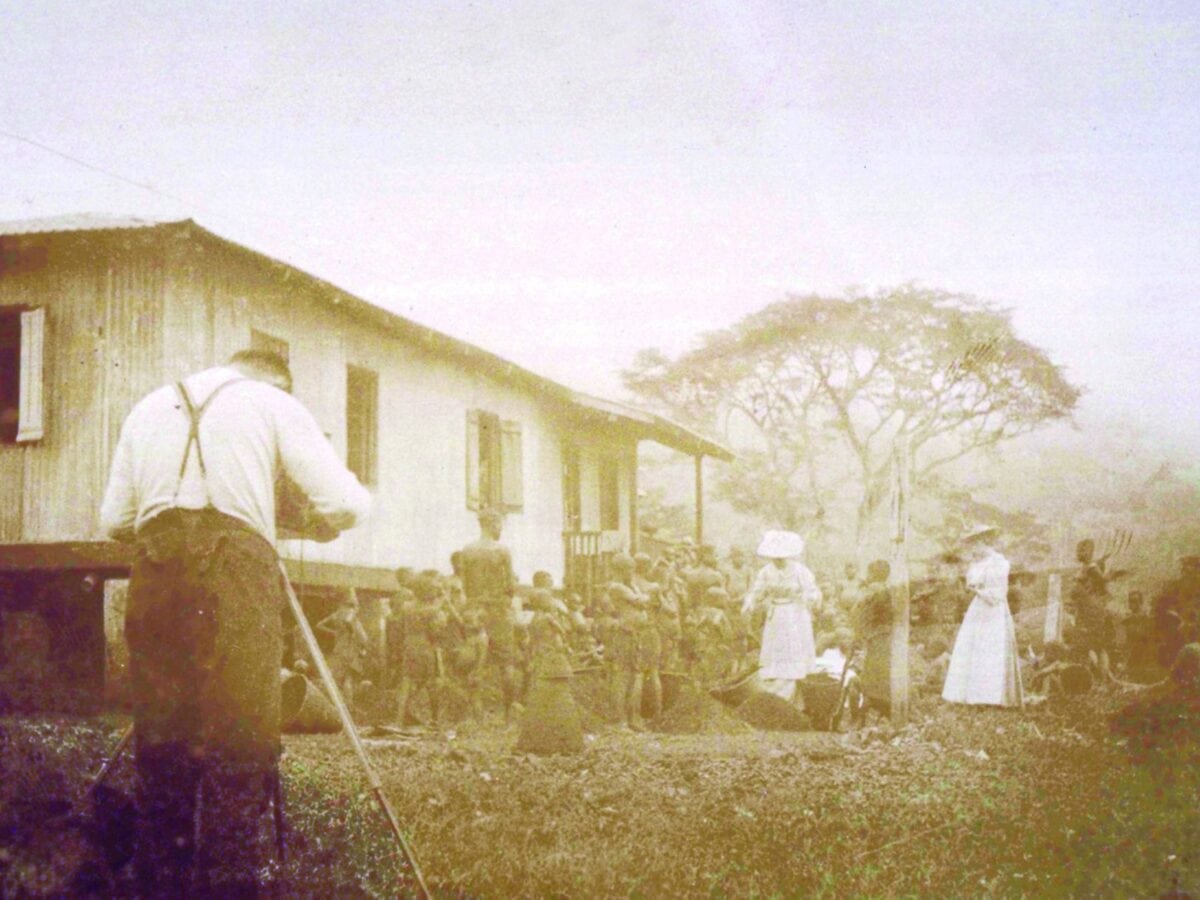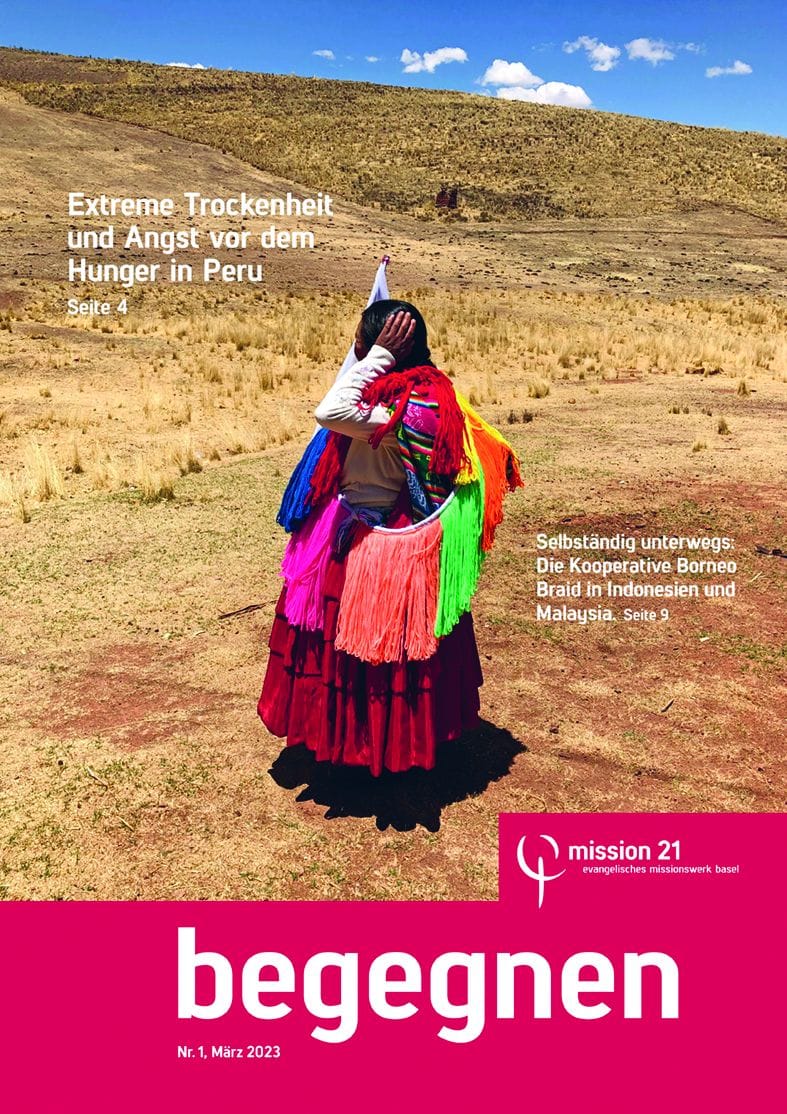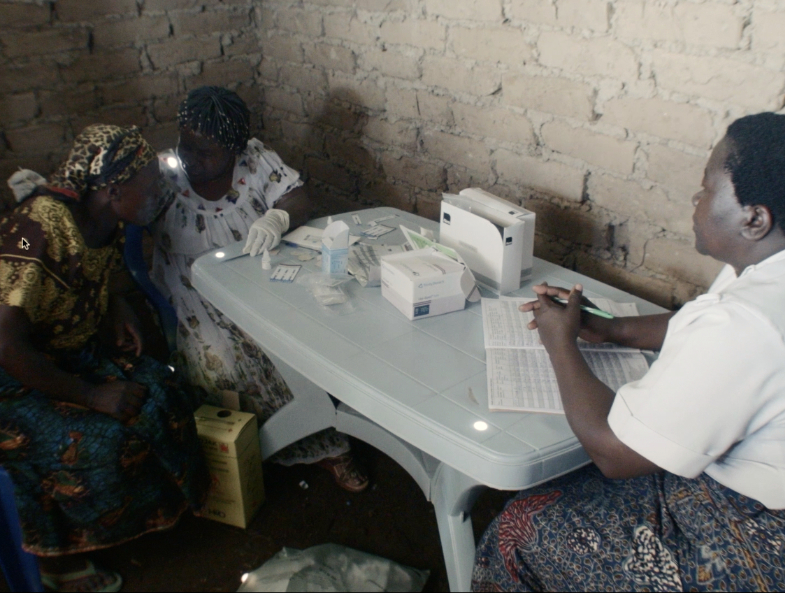Pictures are precious historical sources. But when we look at a historical picture, we should not trust our eyes too much. Because often the story behind a picture is different from what we think we see.
There is only rudimentary information about the photo shown above. It is untitled and was taken by the Basel missionary Gottlob Walker in Cameroon between 1890 and 1906. The scene shows a photographer in a white shirt adjusting the camera in the foreground, with a group of locals and two women dressed in white, presumably Europeans, in the background. The locals turn their backs to the photographer, while the two European women look towards him.
Nowhere are the exact circumstances recorded as to why a picture was to be taken at this particular moment in this place - and whether one was taken at all. However, it is one of the very few photographs in the collection of the Basel Mission in which a photographer takes a picture of another photographer taking a picture.
Images stimulate the imagination
From the 1860s, the Basel missionaries - at that time they were only men - had the task of taking photographs of their travels and encounters for publications and for the training of seminarians in the mission house and to send them to Basel. The resulting picture collection of the Basel Mission with over 50000 photographs is unique worldwide.
Many of the shots seem to tell us a story. Looking at the picture with the photographer, for example, we can imagine how he sets up the camera and places the two women in the midst of the locals. In the viewer's mind, images emerge of how the scene might have played out. But depending on the background knowledge of the audience and depending on the situation, the stories we imagine when looking at pictures are far from reality - and often this reality can no longer be reconstructed.
Where, how and why?
What we do not know, for example, is how the photographer and his companions traveled to the village and which village it is. What we know from the time of the photograph, but what is not visible in the photo: In the early days of photography, the weight of photographic equipment was up to 20 kilograms. It is known that missionaries on their travels needed the support of locals
had, which carried the equipment and sometimes also people. There are also shots in the collection of pictures where these carriers can be seen, but always without names and thus without any individuality.
Pictures seem to tell stories. But what they tell us is not always what was. Whether looking at a missionary preaching a sermon or at a child in front of a house in Cameroon - we need more than our eyes to learn something from these pictures. We will present some of such pictures from the collection of the Basel Mission to you in the next issues and explain what they
show us, supposedly show us, or even conceal us.
Text: Patrick Moser, Mission 21
This text is part of the series "One picture, one story" and was published in our magazine "begegnen". You can find more texts in the series on the page about our research archive: ►Research Archive - Mission 21 (mission-21.org)








